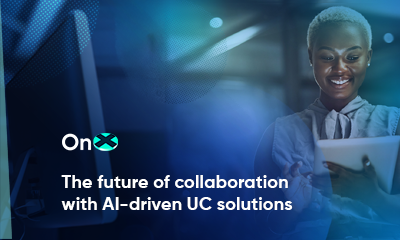
Investing in a data infrastructure that’s used for daily operations is expensive, but it’s an easy financial decision when you consider all of the benefits and alternatives. Spending money on a dedicated environment that is rarely activated in order to maintain continuity of operations during a disaster was an expensive but necessary burden until recently.
Today, in the age of connected devices, advanced applications are driving business models, and even a brief period of downtime can be catastrophic for organizations’ bottom lines and brand integrity. When users can seamlessly switch to new providers at the tap of an icon, downtime is no longer acceptable at any rate.
When considering disaster recovery (DR) in the cloud, companies must rethink the complex and costly approaches they’ve grown accustomed to. The digital landscape has transformed to favor streamlined, easily managed virtual infrastructure that is ready to activate at a moment’s notice. Because of this, there is no better solution than the public cloud for disaster recovery.
Read more: Managed Disaster Recovery Using Microsoft Azure
Now, disaster recovery can be accessed in the public cloud, just like any other Software-as-a-Service (SaaS) offering. The flexibility and scalability provided by cloud services enables companies to take advantage of a state-of-the-art DR environment without the inflated overhead of dedicated equipment that sits idle for the majority of its lifetime.
Disaster recovery as a service (DRaaS) provides the following:
Reduced costs
Switching disaster recovery services from a capital expenditure (CapEx) model to an operating expenditure (OpEx) model, you can dramatically reduce your cost structure. The first way you’ll cut costs is by eliminating the need for massive upfront capital, as there is no infrastructure to purchase, build, provision, or integrate. Disaster recovery compute and storage services are delivered remotely, allowing the cost of infrastructure to be shared among all the clients it serves. The second benefit you’ll notice is the decreased need for ongoing operational costs. Management and upkeep of the infrastructure are outsourced to your cloud provider—the only thing you need to do is decide if you want to manage the environment yourself or work with a managed services provider who has the experience to meet your RPO/RTO objectives.
Cutting-edge technology
Having managed cloud disaster recovery services means you always enjoy the latest upgrades and features automatically. Cloud DR providers are competing for your business like any other vendor, and as a result are continually pushing each other to provide best-in-class service. Already, many providers are deploying advanced technologies like artificial intelligence (AI), robotics process automation (RPA), and quantum computing.
Custom solutions
When the cloud emerged, there was a conception that it functioned like a warehouse of generic computing and storage technology. To some degree that may have been true, but in recent years, providers have made groundbreaking innovations in the delivery of highly customized features and solutions. Robust templates in finance and healthcare have transformed how both verticals are now operating. Providers are working closely with leading technology consultants like OnX to craft custom solutions to meet their unique requirements and transform verticals across all industries.
Seamless Scalability
The biggest issue with legacy dedicated DR infrastructure was the wasted resources. The public cloud provides just the right level of storage and compute to meet your continuity needs in the event of a failure without the need for an over-engineered environment. The near-instant provisioning of virtual environments the cloud provides ensures your consumption matches your data load. Replicating from cloud to cloud is easy, and offers an extra layer of protection against failure in case of a regional disaster.
One of the big challenges involved with DRaaS, however, is the need to acquire expertise in cloud design of the infrastructure and services. Your provider can offer you plenty of assistance, but in most cases it’s more advantageous to hire an independent service provider to ensure the environment you’re creating offers the highest possible return on your investment.
This is where OnX becomes invaluable. Our proven methodology is designed specifically to deliver solutions for your managed cloud disaster recovery needs. We start by making a thorough assessment of your existing environment, applications, services, workflows, business objectives, and other critical aspects of your enterprise. The next step is designing and implementing a robust program intended to fulfill optimal recovery point and time objectives (RPO/RTO). We also have the capability to integrate a wide range of managed services, including documentation and annual testing to ensure a successful recovery every time. Finally, we offer ongoing maintenance and support of the environment, freeing your IT staff to focus on higher level tasks and strategic goals.
The ease with which robust DR environments can be created in the cloud and integrated into the enterprise business environment has revolutionized disaster recovery. As the business model continues to become wholly dependent on functioning data infrastructure, companies can no longer risk depending on costly on-premises infrastructure.
Read this case study from OnX for an example of a cloud disaster recovery solution that provided a transportation provider with increased flexibility, efficiency, and cost savings.














